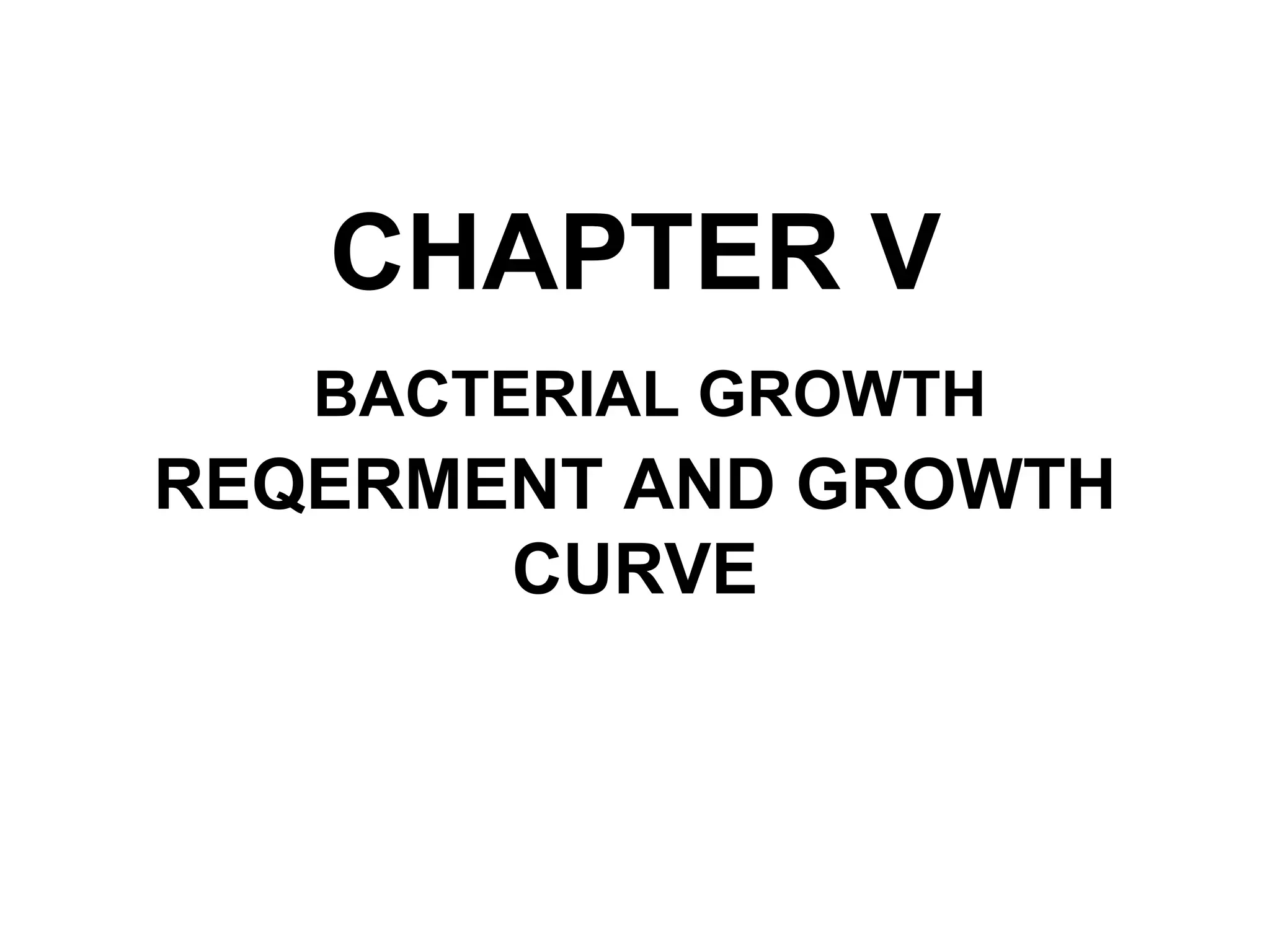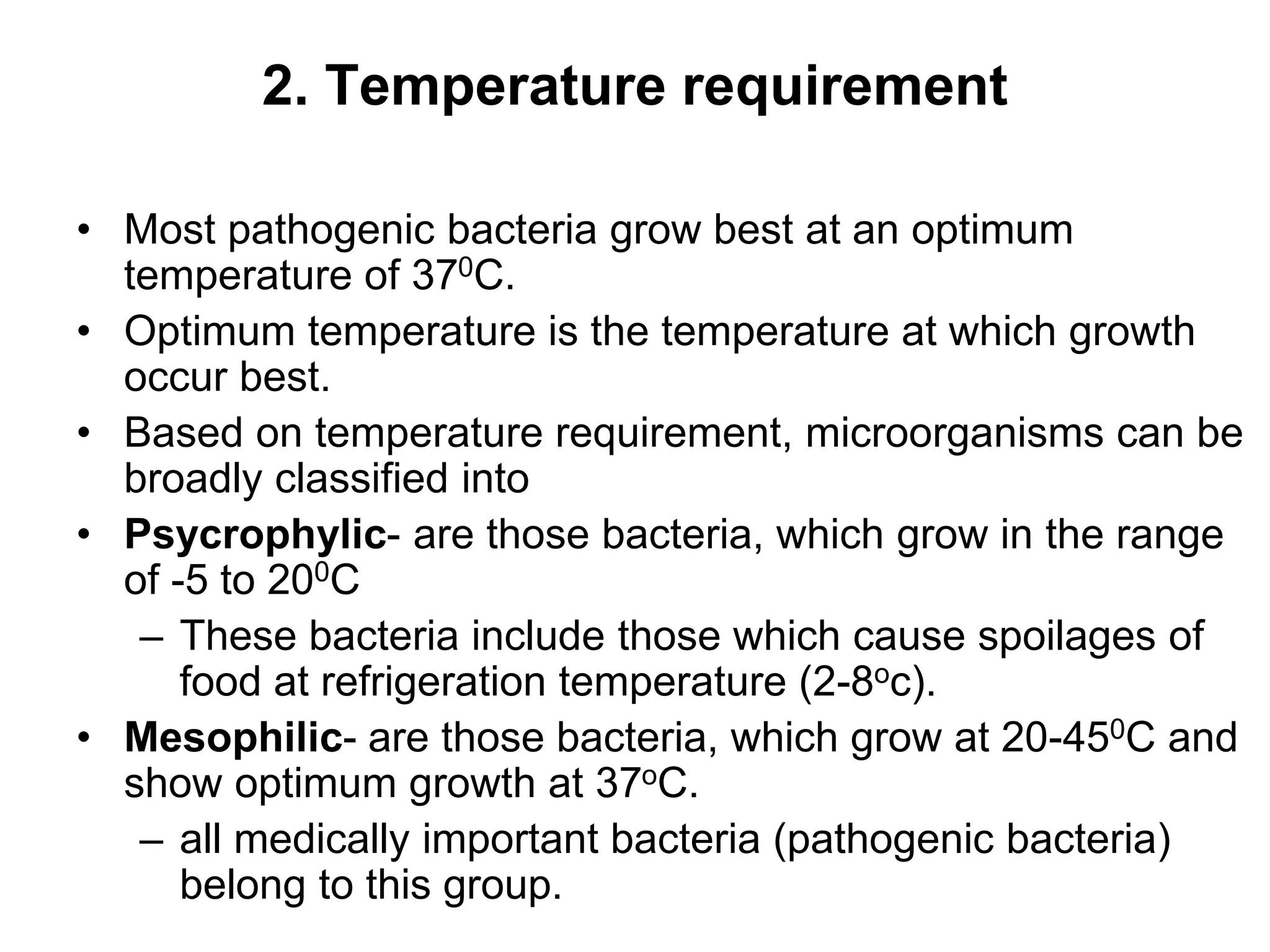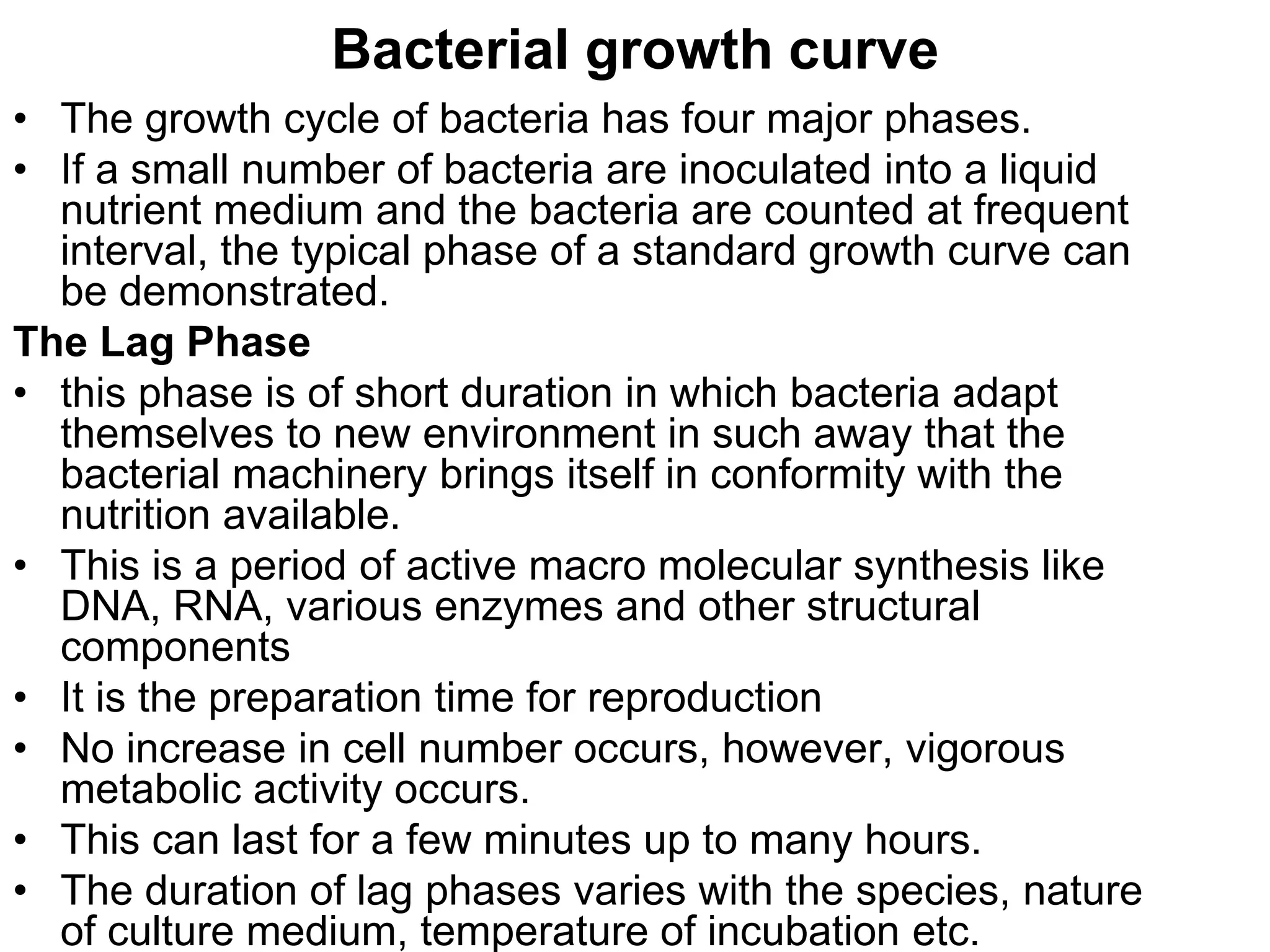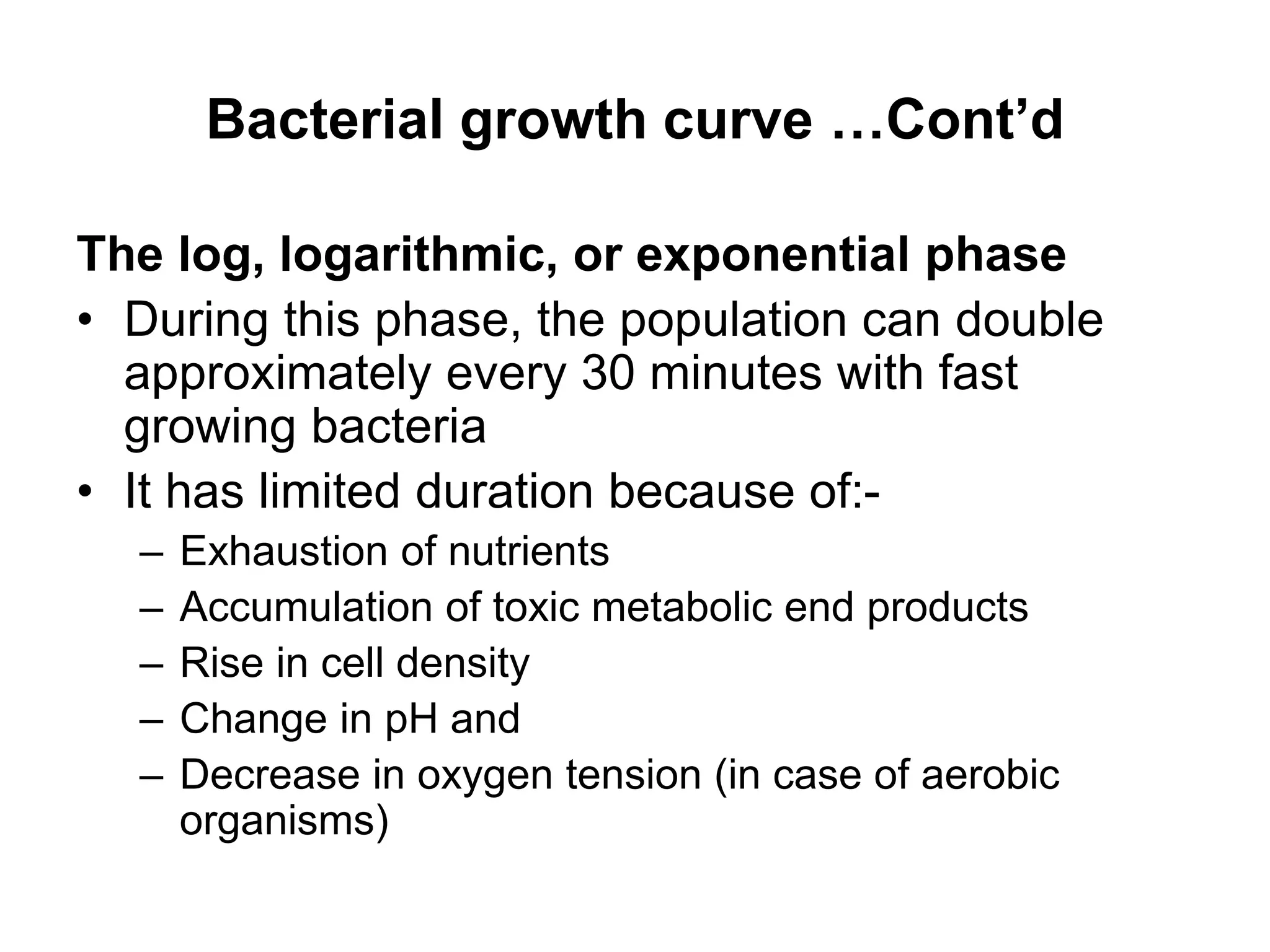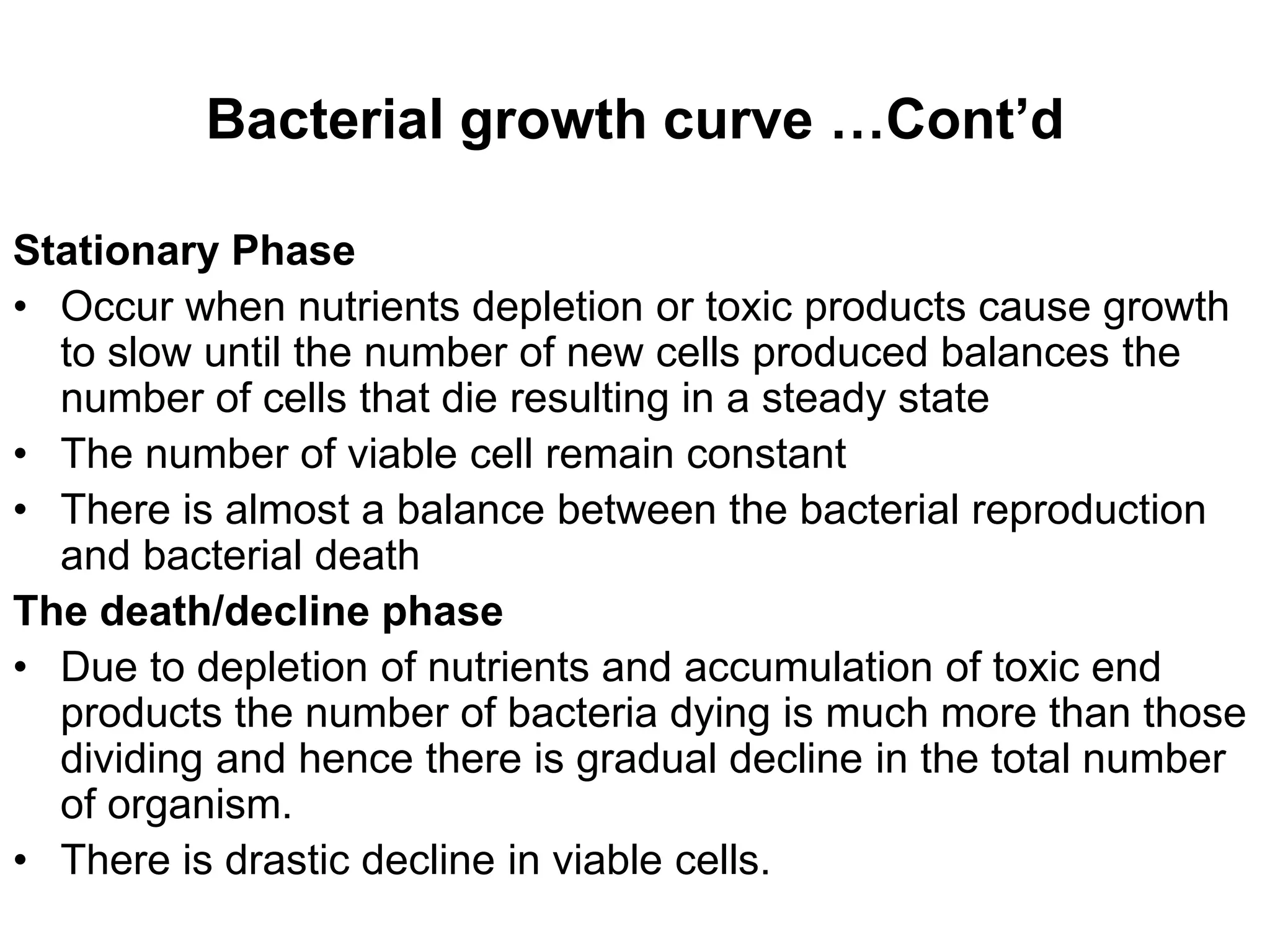This document discusses bacterial growth requirements and the growth curve. It explains that bacteria need nutrients, environmental factors like temperature, oxygen, and pH to grow. The growth curve consists of four phases - lag phase where bacteria adapt, exponential or log phase where growth is rapid, stationary phase where growth balances with death, and death phase where bacteria die off. The generation time is the time for a bacteria to double. Continuous culture devices are used to study bacterial growth over long periods with a constant supply of nutrients.
